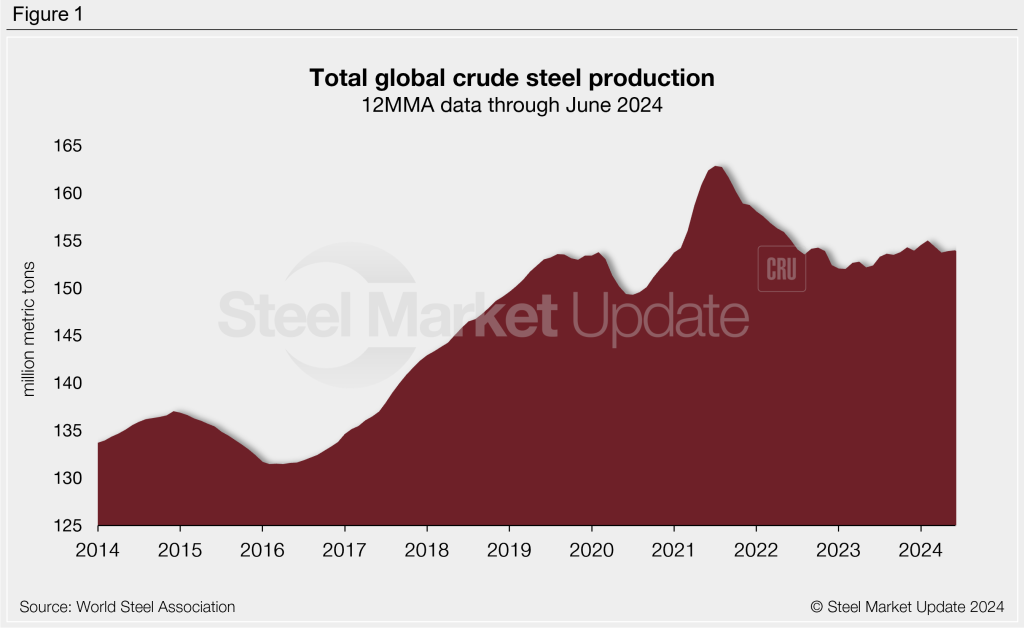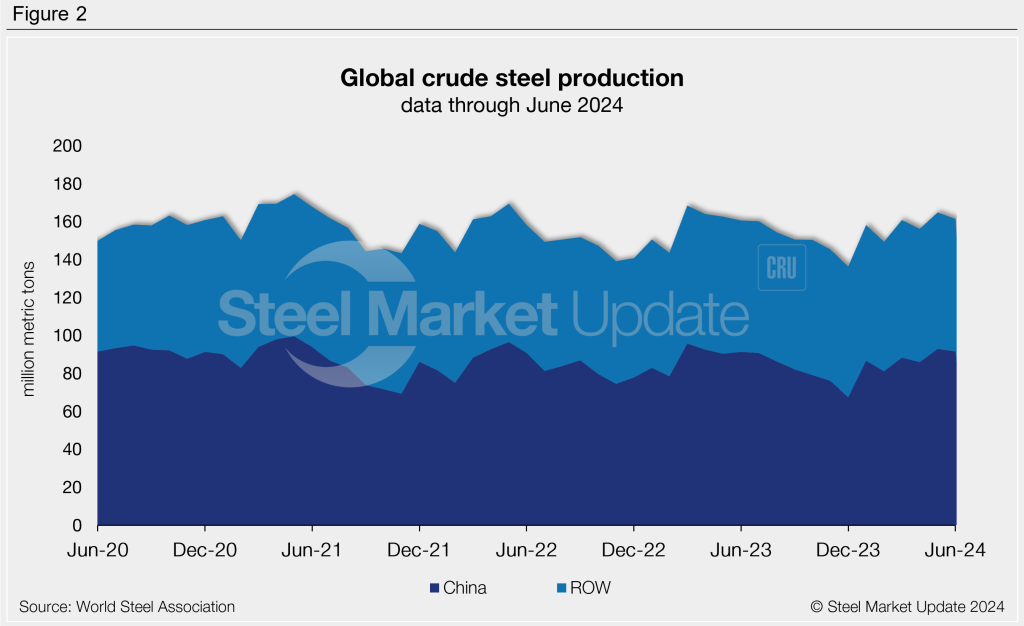Analysis
July 23, 2024
Global steel production dipped in June
Written by Brett Linton
Global steel output eased 2% in June following May’s 14-month high, according to World Steel Association’s (worldsteel) latest release.
Production from all steel mills around the world totaled 161.4 million metric tons (mt) as of last month. Global output has averaged 158.4 million mt across the first six months of the year, almost identical to the same time period of 2023. June production is less than 1% greater than the same month one year ago.
On a three-month moving average (3MMA) basis, production rose to an 11-month high of 160.8 million mt through June, up less than 1% from the month prior.
On a 12-month moving average (12MMA) basis, production over the last 12 months has averaged 154.0 million st per month through June. This rate is 1% greater than the June 2023 12MMA and has held relatively steady over the past two years.

On a daily basis, June production averaged 5.38 million mt per day, 1% percent higher than May. This is now the highest daily production rate seen since April 2023 when it was 5.47 million mt. Daily production is less than 1% higher in June than the same month one year ago.
Regional breakdown
The world’s top steelmaker, China, produced 91.6 million mt last month, down 1% from May’s 14-month high. June production is flat year on year (y/y). Year-to-date production averaged 87.8 million mt for the first six months of the year, 1% less than the same period in 2023.
Chinese production represented 57% of the world’s total output in June, up from 56% in May and in line with the same month last year.
Meanwhile, steel output in the rest of the world (ROW) decreased 3% from May to June. Production in these regions totaled 70 million mt for the month, up 1% y/y. ROW production has averaged 71 million mt so far in 2024, down slightly from 70 million mt compared to the same period last year.
Looking at production by country, Indian mills held the number-two spot in June, producing 12 million mt of steel. Next up was Japan and the US at 7 million mt, respectively, followed by Russia at 6 million mt.








